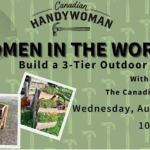When it comes to simpler equipment repairs like tire repair, there are a couple of options a person can take:
- Some will bring the equipment to a dealer, drop it off with instructions to fix it, pick up the equipment when it’s repaired and be none the wiser.
- Some people are more adventurous and depending on the issue may decide to repair the equipment themselves.
And there are countless variations in-between those options. The equipment in question could be a car, snow blower, lawn mower, a chainsaw, computer, phone or tablet, a washer or dryer and so on.
Regardless of who does the repair, there are three basic options in relation to acquiring parts for the equipment;
- New, manufacturer specific parts are referred to as OEM parts, which is an abbreviation for Original Equipment Manufacturer
- New aftermarket parts.
- Used parts
Getting the Parts:
While used and aftermarket parts may be less expensive, they can sometimes be more expensive too.
They are usually:
- Much easier to obtain
- Have more variations
- Can be both a higher or lower quality compared to the equivalent OEM part.
However, with aftermarket and used parts, here is also a chance the quality is substandard or not consistent. Sometimes there are so many options with aftermarket parts it can be overwhelming to choose. There is also a concern when using aftermarket parts that it could void certain manufacturer warranties.
My Experience:
Recently I had to choose to use OEM or aftermarket part myself. My riding lawn mower blew a tire. I operate a Toro SW5000 Zero Turn lawn mower that has very specific tires which have to be ordered from a Toro dealer, and are quite expensive.
Unfortunately, there are no Toro dealers within an hour and half from me. The process to replace the tires are fairly easy and I don’t have any warranty considerations. Because obtaining the OEM tires was so cumbersome, I decided to go with an aftermarket alternative turf tire that is readily available. The replacement tires were a tad narrower than the original.
What Happened:
- I had to jerry-rig the axel with spacers and couplers to accept the narrower turf tire and it worked…or seemed too.
- Unfortunately within a 2-month period, because of the narrow face of the tire replacement, it couldn’t withstand the pressure of the zero turn activity and I blew not one, but two of the replacement turf tires.
- I finally bit the bullet and ordered the proper OEM replacement tires. It’s regrettable the aftermarket tire didn’t work. I probably ended up paying a lot more for the aftermarket tires than if I had just ordered the OEM tires in the first place.
How I Did It:
Here’s a link to a video of me replacing the aftermarket tire with an OEM tire.
The Steps Replace the Tire:
- Ensure the replacement tire is properly inflated and greased
- Chalk the lawn mower so it won’t move
- Jack up the mower so the tire is just off the ground
- With two 3/4” sockets or wrenches, loosen and remove the spanner bolt from the caster fork
- Remove the old tire
- Making sure the air valve is facing out, line up the center of the new tire in between the holes on the caster fork
- Slide the spanner bolt through the assembly
- Tighten the nut back on to the spanner bolt
- Remove the jack and chalk
Final Thoughts
In hindsight, I should have just ordered the OEM parts from the get-go, but I was really hoping the less expensive turf tires would have worked. It was a learning process though that is easy enough and totally up the alley of a DIY’er.








